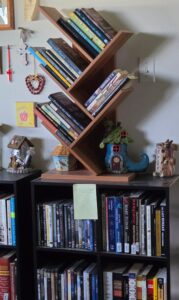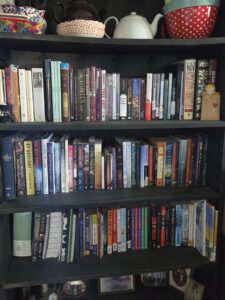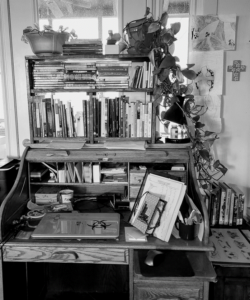 I feasted on stories from an early age. Tell me a story, read to me at bedtime, give me some story candy during down time so that I can nap with sweet dreams. Television, books, or even a narrative dinner conversation, caused me delight.
I feasted on stories from an early age. Tell me a story, read to me at bedtime, give me some story candy during down time so that I can nap with sweet dreams. Television, books, or even a narrative dinner conversation, caused me delight.
With five children, my mother had rules and one of them was, go outside and play until you are worn out enough to not fight, nor disturb the peace, then you can come inside. We were allowed one hour of television a day except Saturday morning when we could watch cartoons.
What did we do outside? If my little brother was available, we would play out some imagined drama. We operated a local hardware, grocery, or feed store. Sometimes we used our active imaginations to travel to faraway places as adventurers, detectives, or warriors. If my older brothers were available, we would head out to battle with a horse-drawn wagon and several mounts. When playing alone, I created cities of mud with the garden hose and a sandpile. I also developed imaginary friendships with leaf creatures and dust devils. I knew my fairy folk were imaginary, but I kept to them, often whispering caution as I ranged farther from home.
I learned to ride a horse and shoot a rifle but was never good at either, despite wanting dearly to impress and keep up with my older brothers.
Following our play, we came inside to settle down and watch a little television. If my older brothers were inside, we watched westerns and pioneer stories: Bonanza, Paladin, Branded, The Big Valley, Daniel Boone, and Davy Crockett. I didn’t love television. Instead, I itched to return to my land of make-believe outside.
Then I discovered novels. My attention and imagination were held captive by stories on paper created by my new favorite authors: Anne McCaffrey, Ayn Rand, Richard Adams and C.S. Lewis. I quieted myself with story. Later, I found Elizabeth Peters, Ellis Peters, and G. K. Chesterton, who helped me fall in love with the mystery genre. Despite my new love for mysteries, I didn’t read Agatha Christie or Dorothy Sayers until later. On television I found the popular program, Murder She Wrote. My brothers scoffed. My mother winked, and my father shook his head.
Murder She Wrote influenced me in ways I am still learning. It set me on a legitimate path to writing. I asked my grandmother to give me a manual typewriter that I could use without the need of an electrical outlet. This seemed very smart to me. In my “thank-you” letter to my grandmother for that gift, I told her I could even write in the deep woods without cramping my hand on a pencil or pen. Not only that, but I could also read what I had written in the deep woods—something that I wasn’t able to do when I wrote with paper and pencil because of the atrocity of my lefthanded cursive.
Murder She Wrote added another genre to my reading habits and gave me inspiration for writing. While I didn’t think of writing murder mysteries, I did think of writing clear, clean, and engaging stories. The television show, though candy, was clean and engaging. Even though the writers of Murder She Wrote used the same recipe of story telling repeatedly. I enjoyed the compact, little bundles of story. In a world that had become increasingly rich with the conflicts of college, career, and being a young lady, I relished the break that came with watching this program and thinking of writing.
Just because I wasn’t writing mystery stories didn’t mean I wasn’t a fan. Until recently, I mostly watched mysteries on television. I watched Magnum P.I., Barney Miller, Hill Street Blues, and Columbo, then Law & Order, NCIS, and even a little CSI and Miami Vice. I watched all these television shows, still limiting myself to one hour a day as my mother had instructed. None of this included the British crime dramas I found later when our rural television reached across the pond (England.)
Little by little, I learned that I liked a puzzle to go with my characters and to shape the story. Who did the dirty deed and why? With Colombo, I knew who did and sometimes why, but I never knew how Colombo was going to get the doer of the dirty-deed to confess.
Recently, I’ve set my sights on learning some of the history of mystery and looking at some of the divisions of the genre. From the Sherlockian reasoned approach to the “down-on-his-luck” antics of Easy Rawlins, I’m ready to learn more. I hope readers will enjoy the study as much as I do.
As always, thank you for reading. Happy puzzling.
Grateful, and blessed, B.
Writers, and those that want to know more about short story, check out my next workshop at: https://www.bacoots.com/event/short-fiction-writing-workshop/

 I am a mother, author, engineer, farmer, occasional actress, and incurable dog-sap. I think things and write things and embarrass myself often.
I am a mother, author, engineer, farmer, occasional actress, and incurable dog-sap. I think things and write things and embarrass myself often.